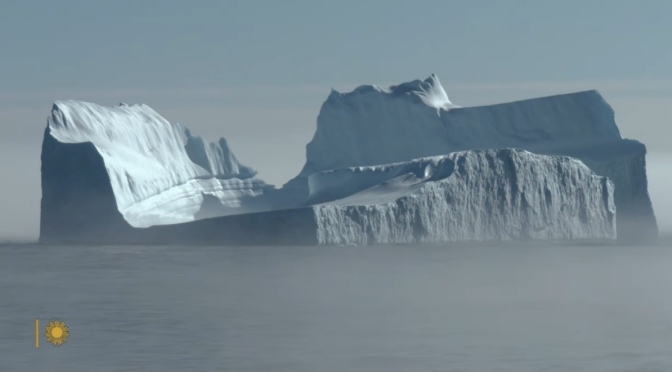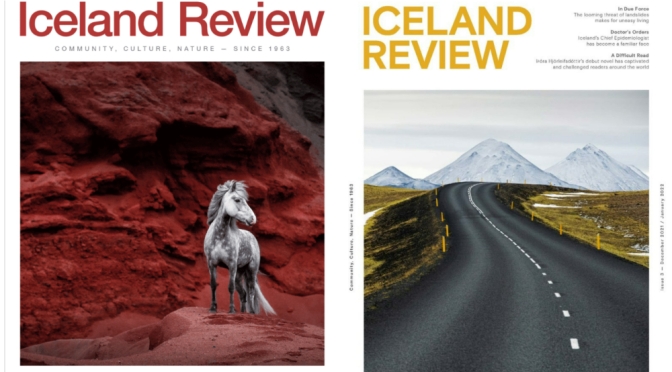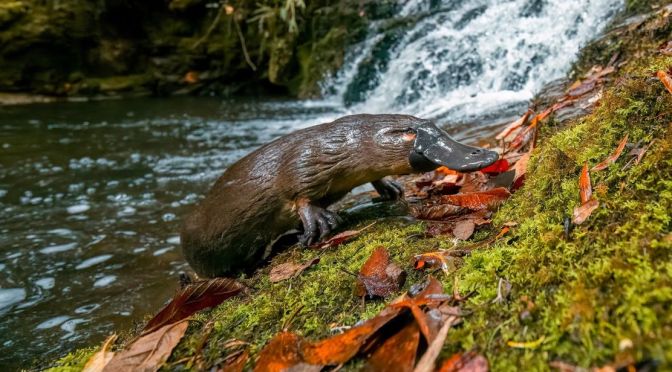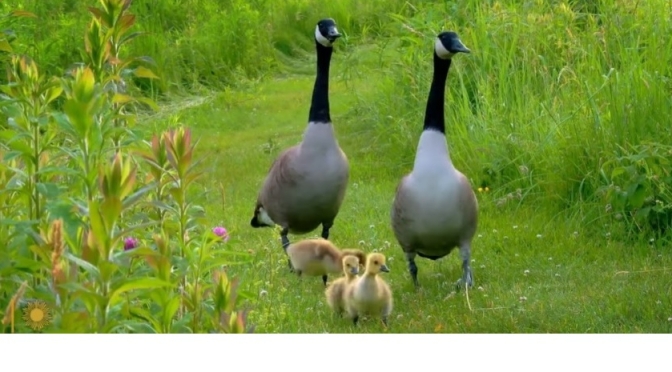CBS Sunday Morning (April 21, 2024): We leave you this Sunday amid icebergs in the Southern Ocean off the Antarctic peninsula – icebergs rapidly melting as ocean temperatures rise. Videographer: Lee McEachern.
Tag Archives: Nature
California: Elk At Point Reyes National Seashore
CBS Sunday Morning (March 10, 2024): We leave you this Sunday Morning with majestic Tule Elk at Point Reyes National Seashore, in California. Videographer: Lance Milbrand.
Tule elk are endemic to California and the most specialized elk in North America, given that they live in open country under semi-desert conditions, whereas the species as a whole typically occupies temperate climates and utilizes heavy cover at least seasonally.
Point Reyes National Seashore is a vast expanse of protected coastline in Northern California’s Marin County. Beaches here include Wildcat Beach, with the cliffside Alamere Falls. On a rocky headland, the 1870 Point Reyes Lighthouse is a viewpoint for migrating gray whales. The Phillip Burton Wilderness features extensive trails through grassland, firs and pine forest, and up to the peak of Mount Wittenberg.
Nature: Coastal Desert Of Baja California, Mexico
BBC Earth (January 7, 2024) – Journey to the coastal deserts of Baja California to witness marine turtles laying their eggs and dolphins gliding through the ocean.
It is the only desert in the world surrounded by two seas, a geologically isolated peninsula sets the stage for a myriad of remarkable plants and animals exemplifying adaptations to an isolated and arid environment. The Baja California Desert is the peninsular arm of the mainland Sonoran Desert, and although closely related to each other, they contain dramatically different evolutionary histories.
TV: David Attenborough’s “Planet Earth” At 20 Years
BBC Earth (December 10, 2023) – Over the past two decades, Sir David Attenborough has travelled to the furthest corners of our planet.
20 years. 7 continents. 3 series. 1 planet.
He reflects upon the incredible animals and habitats he has seen, and what the future could hold – for both us and them.
Culture: Iceland Review Magazine – Oct/Nov 2023


ICELAND REVIEW MAGAZINE (OCT/NOV 2023): The latest issue features ‘Island In The Making’ – A Scientific Expedition of Surtsey Island; Mycological Magic – Foraging with Iceland’s Mushroom Queen, and more…
Wildlife: ‘Nature On PBS’ Season 42 Trailer (2023-24)
Nature on PBS (August 29, 2023) – NATURE returns for its 42nd Season, featuring a brand-new Spy in the Ocean miniseries, alongside documentaries on grizzlies, whales, shorebirds and ancient sea monsters.
THE PLATYPUS GUARDIAN | Wednesday, October 18
Witness the story of an extraordinary man and a mysterious animal living on an island at the end of the world…Tasmania. Pete Walsh is a Tasmanian with no background in natural history, yet he’s become obsessed with one of nature’s least understood creatures, the platypus. Before it is too late, Pete is on a mission to observe and understand these animals and save them from urban development in the capital city of Hobart. Pete befriends one particular female platypus he names Zoom. She lets him into her secretive world and Pete learns more about the life of this enigmatic species, capturing unique footage of their behavior.
SPY IN THE OCEAN (4-part special) | Wednesdays, October 25 – November 15
The latest installment of the popular Spy in the Wild series takes place in the ocean, the largest ecosystem on Earth. This four-part Nature miniseries deploys animatronic spy cameras disguised as marine animals to secretly record behavior in the wild. These uncanny robotic look-alikes take us to places where no spy has gone before. They will swim, float, paddle, waddle, drift and fly into every nook and cranny to film rarely seen behavior that reveals how ocean animals possess emotions and behavior similar to humans – including the capacity to love, grieve, deceive and invent.
BIG LITTLE JOURNEYS (3-part special) | Premieres Winter/Spring 2024
Small animals, even tiny ones, must sometimes make epic journeys to find a home or a mate. While the distances may not seem monumental to us, to these little creatures the journey is monumental. Grasses appear like skyscrapers, mounds become mountains and raindrops fall as big as cars. Meet six heroic, tiny travelers risking it all to complete big journeys against the odds.
GRIZZLY 399 (working title) | Premieres Winter/Spring 2024
The most famous bear in Yellowstone is responsible for 22 descendants. Grizzly 399 has become a symbol of the clash between humans and the wild, as well as a measure of success for her species as it creeps back from the brink of extinction. Now, the stakes are higher than ever as the State of Wyoming petitions the federal government to remove grizzlies from the endangered species list—which would make it legal to hunt bears for recreation. But 399 is far more than just a symbol, she’s the protagonist of a riveting story full of twists and turns, hope and heartbreak.
ATTENBOROUGH AND THE JURASSIC SEA MONSTER | Premieres Winter/Spring 2024
Sir David Attenborough unearths a once in a lifetime discovery: the fossil of a giant Pliosaur, the largest Jurassic predator ever known. Follow a team of forensic experts on a perilous expedition to excavate the skull, uncover the predatory secrets lying deep inside the fossil, and unlock clues about the life of this giant sea beast.
PATRICK AND THE WHALE | Premieres Winter/Spring 2024
For years, Patrick Dykstra has traveled the globe following and diving with whales, learning how whales see, hear and perceive other creatures in the water. In Dominica, Patrick has a life changing experience – a close encounter with a sperm whale he names “Delores.” Witness Patrick and the whale attempt to communicate with each other in extraordinary footage never before seen.
RAPTORS: A FISTFUL OF DAGGERS (two-part series; working title) | Premieres Winter/Spring 2024
The planet’s most successful large predators are a group of birds known as raptors. United by a hooked beak, a taste for flesh and a set of razor-sharp talons, these birds of prey have conquered the globe. Raptors dominate every habitat in which they live. Learn more about eagles, hawks, and falcons as well as the lesser-known hunters like the secretary bird, the caracara, kites and more.
UKRAINE ANIMALS (working title) | Premieres Winter/Spring 2024
Ukrainian YouTuber Anton Ptushkin documents the work that Ukrainian citizens have done to rescue and care for the pets and zoo animals abandoned during the war. Before the invasion in February 2022, Ukraine had the second-highest population of pets per capita in the world. In the face of violence, pets and their owners became symbols of resistance, heroes and frontline volunteers. See how a national tragedy transformed into a global story of incredible devotion and love.
FLYWAYS (working title) | Premieres Winter/Spring 2024
Shorebirds fly thousands of miles each year along ancient and largely unknown migratory routes called Flyways. Species travel from feeding grounds in the southern hemisphere to breeding grounds in the Arctic regions and back again, flying up to nine days non-stop without food or water. But their populations are crashing. Follow a conservation movement of bird-loving experts and citizen scientists as they mobilize to the challenge of understanding and saving shorebirds.
GORILLA (working title) | Premieres Winter/Spring 2024
Gabon’s Loango National Park is home to a group of western lowland gorillas that have become accustomed to biologists who have studied them for almost 20 years. This documentary presents an intimate look at a silverback and his family, and features a newborn baby gorilla, brave researchers, forest elephants, buffalos and the last remaining wild coastline in the African tropics.
Nature: Filming Birdlife In America’s Arctic Wetlands
Cornell Lab of Ornithology (July 26, 2023) – The tundra wetlands in the heart of America’s Arctic, centered in the NPR-A around Teshekpuk Lake, are among the most extensive in the circumpolar Arctic and contain some of the highest recorded densities of breeding shorebirds in this vast area.
Millions of birds from all over the world flock to these wetlands every year to nest and raise their young. Come along with Cornell Lab’s Gerrit Vyn as he joins a team to capture image of the region’s birdlife.
America’s Arctic is one of North America’s last great wilderness areas, a critical habitat for migratory birds from around the world, and a treasure to be protected for future generations.
Environment: The Grand Canyon Is Losing Its River

The New York Times (June 6, 2023) – Down beneath the tourist lodges and shops selling keychains and incense, past windswept arroyos and brown valleys speckled with agave, juniper and sagebrush, the rocks of the Grand Canyon seem untethered from time. The oldest ones date back 1.8 billion years, not just eons before humans laid eyes on them, but eons before evolution endowed any organism on this planet with eyes.
The Grand Canyon, a Cathedral to Time, Is Losing Its River
Written and photographed by Raymond Zhong, who joined scientists on a 90-mile raft expedition through the canyon.

Since 1963, the Glen Canyon Dam has been backing up the Colorado for nearly 200 miles, in the form of America’s second-largest reservoir, Lake Powell. Engineers constantly evaluate water and electricity needs to decide how much of the river to let through the dam’s works and out the other end, first into the Grand Canyon, then into Lake Mead and, eventually, into fields and homes in Arizona, California, Nevada and Mexico.
Spend long enough in the canyon, and you might start feeling a little unmoored from time yourself.

The immense walls form a kind of cocoon, sealing you off from the modern world, with its cell signal and light pollution and disappointments. They draw your eyes relentlessly upward, as in a cathedral.
You might think you are seeing all the way to the top. But up and above are more walls, and above them even more, out of sight except for the occasional glimpse. For the canyon is not just deep. It is broad, too — 18 miles, rim to rim, at its widest. This is no mere cathedral of stone. It is a kingdom: sprawling, self-contained, an alternate reality existing magnificently outside of our own.
And yet, the Grand Canyon remains yoked to the present in one key respect. The Colorado River, whose wild energy incised the canyon over millions of years, is in crisis.
Nature: White-Tailed Deer, Cades Cove, Great Smoky Mountains Of Tennessee
CBS Sunday Morning (April 30, 2023) – This Sunday morning we visit Cades Cove in Great Smoky Mountains National Park in Tennessee.
Cades Cove is an area in the Great Smoky Mountains National Park that was formerly home to many settlers before the national park was established. It has a long, rich history that is still standing for exploration by visitors today.
The Cades Cove loop is open to visitors from sunrise to sunset daily, with a special vehicle-free Wednesday during the summer to allow for bikers and hikers to enjoy the loop safely. Read on to learn more about Cades Cove, including information on the area’s location, history and landmarks.
Videographer: Scot Miller
Nature: Geese & Goslings – Princeton, Massachusetts
CBS Sunday Morning (April 23, 2023) – Geese and goslings gallivanting in the green grasses near Princeton, Massachusetts. Videographer: Doug Jensen.










